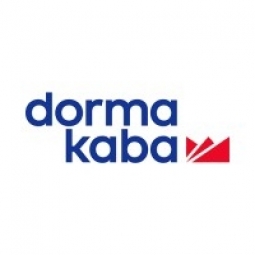公司规模
Large Corporate
地区
- America
国家
- United States
产品
- TS93 System Door Closers
- 8900 Series Surface Door Closers
- 9000 Series Exit Devices
- LM Series Pivots
- EM Series Electromagnetic Door Holders
- PS Series
- D800 Series Deadbolts
- SKC (Serialized Key Control) system
技术栈
- LEED Silver Certification
- Passive solar heating
- Geothermal system
- Rainwater capture system
实施规模
- Enterprise-wide Deployment
影响指标
- Environmental Impact Reduction
- Cost Savings
技术
- 基础设施即服务 (IaaS) - 云计算
适用行业
- 教育
适用功能
- 设施管理
用例
- 楼宇自动化与控制
- 建筑能源管理
服务
- 系统集成
- 硬件设计与工程服务
关于客户
切罗基族东部支系是位于北卡罗来纳州的一个美洲原住民部落。该部落非常重视教育,并投入巨资为其 K-12 学生提供优质的教育设施。切罗基中央学校就是这一承诺的体现。该学校是一座耗资 1.08 亿美元、占地 473,000 平方英尺的综合性建筑,为部落学生提供全方位的校园。校园包括三所学校、三个体育馆、一个礼堂、一个社区中心、一个运动场、一个自助餐厅和一系列最先进的运动场。切罗基中央学校是密西西比河以东最大的“绿色”学校之一,旨在获得 LEED 银级认证并融入众多环保功能。
挑战
切罗基族东部部落曾梦想为其 K-12 学生建造一座耗资 1.08 亿美元、占地 473,000 平方英尺的新综合大楼。切罗基中央学校现在是一个包罗万象的校园,拥有三所学校、三个体育馆、一个礼堂、一个社区中心、一个运动场、一个自助餐厅和一系列最先进的运动场。切罗基中央学校是密西西比河以东最大的“绿色”学校之一。该学校的设计旨在获得 LEED 银级认证,这意味着从项目的开始到结束都要“考虑绿色”。它首先确定了建筑结构如何位于土地上并尊重其自然环境——之后是许多其他节能建筑决策。这些建筑具有许多环保功能,包括被动式太阳能供暖、日光照明和地热系统。为了节约用水,已经建立了一个系统来收集雨水并将其添加到用于冲洗厕所和灌溉地面的供水中。该项目 90% 的建筑垃圾被回收利用。为了确保综合体达到其绿色目标,所安装的通道解决方案还需要满足其可持续性要求,同时提供可靠的安全性。
解决方案
各所学校的内部门和外部门都安装了各种 DORMA 建筑五金产品 — — 在节约能源的同时,还提供了耐用性、强度、可靠性和安全性。TS93 系统闭门器采用独特的凸轮和滚轴设计,符合 ADA 无障碍要求。同时安装了 DORMA 的 1 级窄投影 8900 系列表面闭门器,具有全范围弹簧力调节、自调节挡板、窄投影全覆盖和平板式臂。学校之所以选择 DORMA 的 9000 系列出口设备,是因为它们具有重型底盘、卓越的耐用性,以及平滑的减少投影的触摸条组件,可最大限度地减少夹伤危险。LM 系列枢轴和 EM 系列电磁门吸杆因其长寿命和无故障运行而被选中,适用于学校人流量大的开口。DORMA 的 PS 系列采用重型电路,适用于电感负载和多门应用,可确保学校的出入解决方案始终通电。为了增加安全性,安装了 D800 系列门栓和 DORMA 的 SKC(序列化钥匙控制)系统。通过对每把钥匙坯进行序列化来维护钥匙控制,授权经销商和钥匙切割工使用安全的基于网络的应用程序来验证和跟踪每把钥匙。
运营影响
数量效益

Case Study missing?
Start adding your own!
Register with your work email and create a new case study profile for your business.
相关案例.

Case Study
Revolutionizing Medical Training in India: GSL Smart Lab and the LAP Mentor
The GSL SMART Lab, a collective effort of the GSL College of Medicine and the GSL College of Nursing and Health Science, was facing a challenge in providing superior training to healthcare professionals. As clinical medicine was becoming more focused on patient safety and quality of care, the need for medical simulation to bridge the educational gap between the classroom and the clinical environment was becoming increasingly apparent. Dr. Sandeep Ganni, the director of the GSL SMART Lab, envisioned a world-class surgical and medical training center where physicians and healthcare professionals could learn skills through simulation training. He was looking for different simulators for different specialties to provide both basic and advanced simulation training. For laparoscopic surgery, he was interested in a high fidelity simulator that could provide basic surgical and suturing skills training for international accreditation as well as specific hands-on training in complex laparoscopic procedures for practicing physicians in India.

Case Study
IoT platform Enables Safety Solutions for U.S. School Districts
Designed to alert drivers when schoolchildren are present, especially in low-visibility conditions, school-zone flasher signals are typically updated manually at each school. The switching is based on the school calendar and manually changed when an unexpected early dismissal occurs, as in the case of a weather-event altering the normal schedule. The process to reprogram the flashers requires a significant effort by school district personnel to implement due to the large number of warning flashers installed across an entire school district.

Case Study
Implementing Robotic Surgery Training Simulator for Enhanced Surgical Proficiency
Fundacio Puigvert, a leading European medical center specializing in Urology, Nephrology, and Andrology, faced a significant challenge in training its surgical residents. The institution recognized the need for a more standardized and comprehensive training curriculum, particularly in the area of robotic surgery. The challenge was underscored by two independent studies showing that less than 5% of residents in Italian and German residency programs could perform major or complex procedures by the end of their residency. The institution sought to establish a virtual reality simulation lab that would include endourological, laparoscopic, and robotic platforms. However, they needed a simulator that could replicate both the hardware and software of the robotic Da Vinci console used in the operating room, without being connected to the actual physical console. They also required a system that could provide both basic and advanced simulation training, and a metrics system to assess the proficiency of the trainees before they performed surgical procedures in the operating theater.

Case Study
Edinburgh Napier University streamlines long-distance learning with Cisco WebEX
• Geographically dispersed campus made in-person meetings costly and inconvenient.• Distance-learning programs in Malaysia, India, and China required dependable, user-friendly online tools to maximize interaction in collaborative workspaces.• Virtual learning environment required a separate sign-in process, resulting in a significant administrative burden for IT staff and limited adoption of collaboration technology.

Case Study
8x increased productivity with VKS
Before VKS, a teacher would spend a lot of time showing a group of 22 students how to build a set of stairs within a semester of 120 hours. Along with not leaving the teacher much time to provide one-on-one support for each student to properly learn carpentry, it also left a considerable amount of room for error. Key information would be misinterpreted or lost as the class was taught in the typical show-and-tell way.

Case Study
Scalable IoT Empowering GreenFlex's Sustainable Growth
GreenFlex, a company that supports sustainable development, decarbonization, and energy efficiency, faced several challenges in its quest to expand its business. The company needed to deploy a robust and sustainable IoT technology to support its growth. It was crucial for them to monitor and control devices at customer sites in a safe and reliable manner. They also needed to integrate devices across a range of communication protocols and gather and act on data to meet efficiency targets. GreenFlex had previously built IoT capabilities into its digital platform, GreenFlexIQ, to monitor and manage customer sites remotely. However, they soon realized that they needed a new platform to support their ambitions. They needed a platform that could scale to connect more devices for production management and make it easier for the operations team to manage devices in the field.







